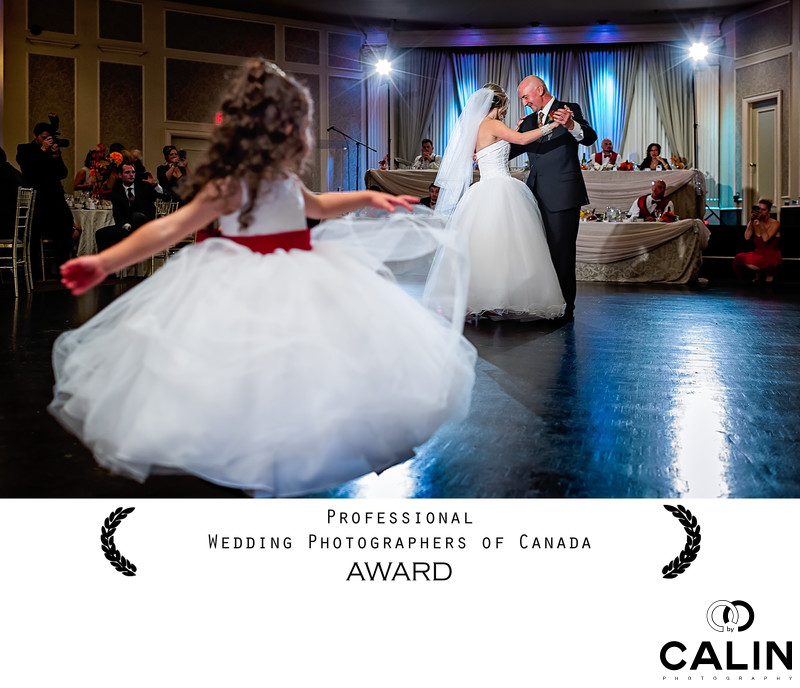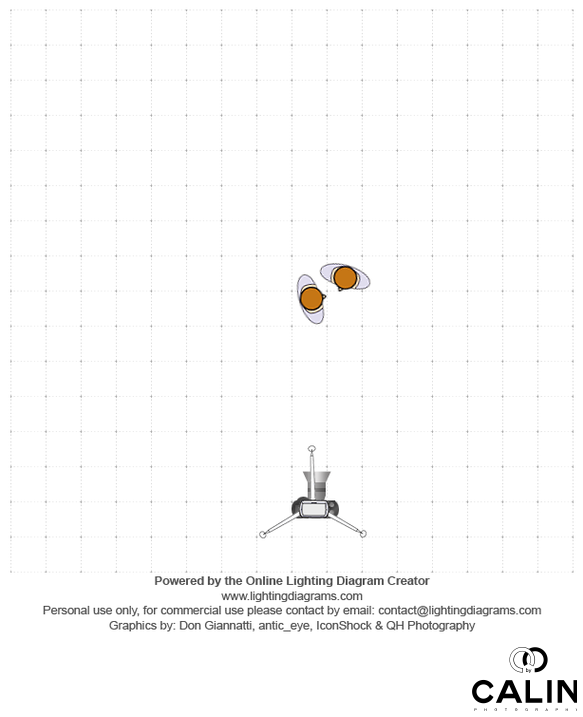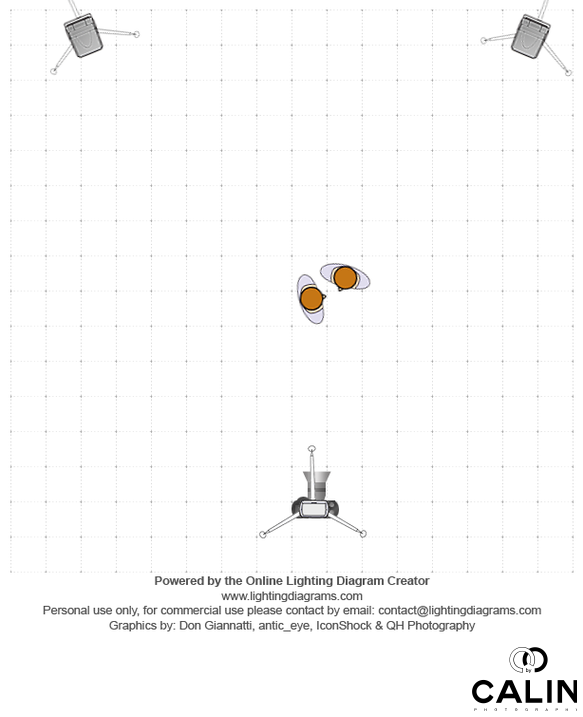How to Light a Wedding Reception
There are several photographers who are lucky enough to shoot at high end venues that have the latest and greatest lighting systems. Here is a wedding at Chateau Le Parc, a splendid event space where the lighting is exquisite. However, most of my couples get married in regular locations where the light is often insufficient or lacks quality. Other times, the bride and groom spend a good amount on uplighting and they want the photos to reflect the atmosphere of the big day.

1. On Camera Flash Bounced into The Ceiling
This is the easiest method, the fastest and the one that works in most situations. One of the crucial conditions is that the event space has white ceilings under 30' tall. What I do is I bounce my on camera flash onto the ceiling so I get a soft, diffused light. I generally bounce the flash at a 45 degree angle to the left or right depending on where my subject is looking. I always try to bounce my on camera flash towards the side where my subject is looking. When I have a bride and groom, I bounce towards the left if she is looking camera left or to the right if she is looking camera right. That gives me a short light scenario and that has a slimming effect on her. 
Pros
Fast, can shoot from any angles, there is no need to set up off camera flashes. It works perfect for fast paced events such as South Asian weddings. You can shoot from any angle and can achieve a consistent look.
Cons
The subject is lit, but there is no separation (the bride and groom often melt into the background). Also, the other guests are underexposed. I generally only use this technique when I run and gun or when we are late for the reception and I have no time to set up OCF (Off Camera Flash).
2. On Camera and Off Camera Flash
This is my go to lighting scheme and I use it in 99% of the time when I photograph indoors. The main light is given by the on camera flash while the rim light is created by two off camera flashes on light stands, placed behind my subjects, usually behind the sweetheart table pointing directly to the centre of the dance floor. A crucial aspect to avoid light spill is to grid the OCFs or zoom them at 135mm to obtain a more directional light as opposed to blasting the whole venue with your speed lights. The flashes behind the couple are set in Manual mode at 1/32 or 1/64 power. The on camera flash is set in manual mode at 1/32-1/8 power while my ISO is 1600-3200 and the aperture at f2.8-f4.
Below you can find the lighting diagram of this scenario.

Pros
Beautiful light, the subjects jump out of the frame, your images will look professional and couples will notice that.
Cons
Slightly more time consuming to set up, you need 3 speed lights, a bit more restrictive. The photographer has to shoot in such way as the couple is between the camera and the rim lights.
FAQs
Q: What happens if you can not bounce because the event space has a black ceiling or a very high ceiling (over 30 feet)?
A: In such cases, you can use a bounce card on camera, a Gary Fong or a Magsphere to obtain a bit of diffusion and a more pleasing light. In the old days, wedding photographers used a bracket. Also, you can shoot holding your camera in your right hand and the flash in your left hand (using a cord to trigger the flash, or radio triggers).
Q: Can I use the on camera flash in ETTL?
A: Sure, but there are a few disadvantages to that. First, your exposure will be inconsistent, which will increase your post production time and increase the cost of your project, or decrease the margins.
As strange as it sounds, we are running a business and cost considerations are crucial. Also, ETTL will not work if the bride and groom enter the room and the outdoor exposure is a few stops brighter.
In other words, the couple enter a dark hall while outdoors you have bright light (that happens in the summer when the entrance takes place at 7 pm, when the light is still bright outside).
Because of the strong light in the frame, the ETTL will consider there is no need for additional light, so your couple will become a silhouette. That is not a problem if you shoot Sony, Nikon and Fuji, but Canon users should be careful as one can not increase the exposure by more than 1-2 stops (at the time of the article).
This has been one of my main reasons why I switched to Fuji from Canon. Sometimes, I shot so fast that the flashes did not recycle.
The images were underexposed by 2-3 stops, but the emotion was perfect and sadly, I could not use the images. Interestingly enough, my second shooter was shooting Nikon 750 at the time and I could use his images. Bad, bad Canon!
TTL also drains your batteries faster and reduces the recycle time. The way TTL works is to send a pre-flash, then measure the exposure and sends the main flash. That means you are getting fewer flashes in TTL than when you shoot in manual mode.
Finally, you might not have enough money to buy 3 flash units, especially when you start your career as a wedding photographer. In such cases, you could buy an inexpensive flash (YN560 IV is a good one) and use it in optical slave mode. Some of the cheaper flashes are triggered by the pre-flash, which defeats the purpose of the three light scenario.